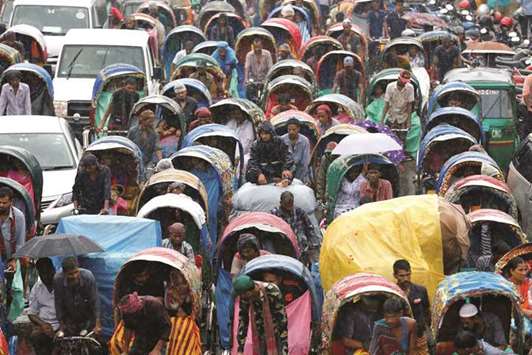Bangladesh has called off search operations following a series of rain-triggered landslides in the country’s southeast, with rescuers having found at least 154 bodies beneath chunks of mud, officials said.
“The rescue operation is officially ended, but the firefighters will move in case of necessity,” announced Manzurul Mannan, chief administrator of Rangamati Hill district, where at least 110 people, including five army troopers, died in landslides.
Nearly 48 hours of ceaseless rain caused the calamity that also killed 36 people in the neighbouring Chittagong district, six in Bandarban and two others in Cox’s Bazar, according to official count.
Mannan said the government launched massive relief works as many people lost their homes and crops.
More than 100 injured are being treated at local hospitals, the administrator said.
The local administration has been trying to restore the road network, which was cut off from other parts of the country due to landslides and fallen trees.
Experts have predicted more landslides in the region in future due to increased variability of rainfall caused by climate change.
“The intensity of rainfall will go up in the hilly areas of Chittagong in the days to come due to climate change. Higher intensity of precipitation will occur in a shorter period of time, causing more devastating landsides,” said climate expert Dr Atiq Rahman.
Although the amount of rainfall may remain the same in the region in the next 30 years, he said, climate model shows that the amount of rainfall, which occurred in past week, may take place within two days in the future, affecting the hill surface and causing more devastating landslides there.
Malik Fida A Khan, a deputy executive director, Center for Environmental and Geographic Information Services (CEGIS), said the variability of rainfall is changing gradually in Bangladesh due to climate change.
“If we assess the average trend of precipitation, we will find its variability is increasing day by day. Rainfall is getting more concentrated. High intensity of rainfall is occurring in a short period. This concentrated rainfall is more dangerous as it triggers landslides,” he said.
Bangladesh is one of the most vulnerable countries to climate change due to its geographic location where high-intensity rainfall has become more frequent in the recent years.
According to the Fifth Assessment Report of the Intergovernmental Panel on Climate Change (IPCC), the frequency of heavy precipitation events is increasing in South Asia, including Bangladesh, while light rain events are decreasing.
A 2014 study of Bangladesh University of Engineering and Technology (BUET) also shows that the highest increasing precipitation trend can be seen in the Chittagong Hill Tract (CHT) region in the days to come.
Hilly topography of this region along with elevation ranging between 600m and 900m above mean sea level contributes to heavy rainfall, the study said.
About the nature of the country’s hills, Dr Rahman said the stability of Bangladesh’s hills is very poor as most of them are created with clay, not with rock.
Since rain directly falls on clay-built hills due to deforestation and hill cutting, it affects the hillslopes and triggers landslides, he said, observing that the hilly areas of the Chittagong region that experienced high deforestation and hill cutting have counted huge loss in landslides this year.
Dr Rahman suggested an immediate end to hill levelling and afforestation to stabilise hill slopes, aiming to prevent future landslides in the hilly region.
Noting that landslides depend on the nature of hills, Khan said when slopes of a hill are changed anyway, one kind of pressure is created inside the hill and cause landslides.
Blaming the development works that changed hillslopes in the CHT, he said if the nature of hills is changed due to unplanned settlement and agriculture landslides will certainly take place there.

Vehicles are seen stuck in a traffic jam during rain in Dhaka yesterday.


